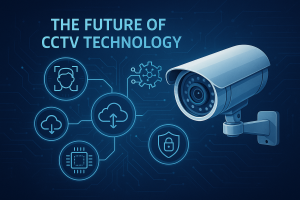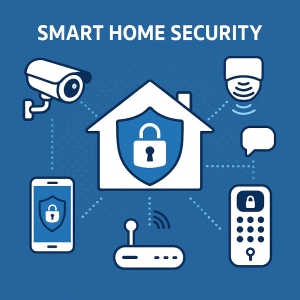In today’s world, personal safety is a significant concern for many individuals. Panic buttons and personal alarms have become essential tools for enhancing personal security, providing peace of mind, and ensuring help is available when needed. This article explores the various aspects of panic buttons and personal alarms, including their types, benefits, and practical usage.
What Are Panic Buttons and Personal Alarms?
Panic buttons and personal alarms are small, portable devices designed to alert others in case of an emergency. They can be worn as pendants, bracelets, or carried in pockets. When activated, these devices emit a loud sound or send a signal to pre-set contacts or emergency services, ensuring that help is on the way.
Types of Panic Buttons and Personal Alarms
- Monitored Panic Buttons:
- Description: These devices connect to 24/7 emergency monitoring centers. When activated, the monitoring center can contact family, friends, or emergency services as needed.
- Benefits: Provides professional assistance and immediate response, ensuring that help is always available.
- Unmonitored Panic Buttons:
- Description: These alarms contact pre-set emergency contacts directly, such as family or friends, without involving a monitoring center.
- Benefits: Offers direct communication with trusted contacts, which can be reassuring during emergencies.
- Wearable Alarms:
- Description: These alarms come in the form of pendants, bracelets, or watches. They are designed to be discreet and comfortable to wear.
- Benefits: Always accessible and can be worn 24/7, including in the shower or bath, where slips and falls are more likely.
- Standalone Alarms:
- Description: These are portable devices that can be carried in a pocket or bag. They are typically activated by pressing a button or pulling a pin.
- Benefits: Easy to carry and can be used in various situations, including outdoor activities.
When to Use Panic Buttons and Personal Alarms
Panic buttons and personal alarms can be used in various situations to ensure safety and prompt assistance:
- Medical Emergencies:
- Scenario: If you feel unwell, experience a fall, or have a medical condition that requires immediate attention.
- Action: Press the panic button to alert emergency services or pre-set contacts.
- Personal Safety Threats:
- Scenario: If you feel threatened by an attacker or find yourself in a dangerous situation.
- Action: Activate the personal alarm to emit a loud sound, attracting attention and potentially deterring the attacker.
- Accidents at Home:
- Scenario: If you have an accident at home, such as a fall or injury, and need immediate help.
- Action: Use the panic button to call for assistance, ensuring that help arrives quickly.
- Outdoor Activities:
- Scenario: If you are hiking, jogging, or engaging in outdoor activities and encounter an emergency.
- Action: Carry a personal alarm to alert others in case of an emergency.
How to Use Panic Buttons and Personal Alarms
Using panic buttons and personal alarms is straightforward, but it’s essential to understand the specific features and functions of your device:
- Activation:
- Method: Most devices are activated by pressing a button or pulling a pin. Some wearable alarms may have additional features, such as GPS tracking or two-way communication.
- Practice: Familiarize yourself with the activation method and practice using the device to ensure you can operate it quickly in an emergency.
- Communication:
- Monitored Alarms: When activated, these alarms connect you to a monitoring center. You can speak directly with an operator who will assess the situation and dispatch help.
- Unmonitored Alarms: These alarms send alerts to pre-set contacts via calls, text messages, or app notifications. Ensure your contacts are aware of their role and know how to respond.
- Maintenance:
- Battery Check: Regularly check the battery status of your device and replace or recharge it as needed to ensure it functions correctly.
- Updates: Keep your device’s software updated, if applicable, to benefit from the latest features and improvements.
Benefits of Using Panic Buttons and Personal Alarms
- Enhanced Safety:
- Immediate Assistance: Provides quick access to help during emergencies, reducing response time and potentially saving lives.
- Deterrence: The loud sound emitted by personal alarms can deter attackers and attract attention, increasing the chances of escaping a dangerous situation.
- Peace of Mind:
- Reassurance: Knowing that help is just a button press away can provide peace of mind, especially for individuals living alone or with medical conditions.
- Independence: Allows individuals to maintain their independence while ensuring their safety, particularly for older adults.
- Convenience:
- Portability: Small and lightweight, these devices can be easily carried or worn, making them accessible at all times.
- Ease of Use: Simple activation methods ensure that anyone can use them, regardless of age or technical ability.
Conclusion
Panic buttons and personal alarms are invaluable tools for enhancing personal safety and ensuring prompt assistance during emergencies. By understanding the types, benefits, and proper usage of these devices, individuals can make informed decisions to protect themselves and their loved ones. Whether for medical emergencies, personal safety threats, or accidents at home, these devices provide a reliable and convenient solution for staying safe and secure.





